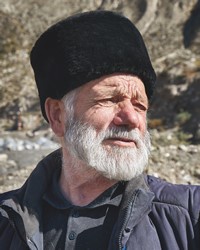Tatar, Nogai in Romania

Photo Source:
Copyrighted © 2026
Vladimir Zhoga - Shutterstock All rights reserved. Used with permission |
Send Joshua Project a map of this people group.
|
| People Name: | Tatar, Nogai |
| Country: | Romania |
| 10/40 Window: | No |
| Population: | 1,900 |
| World Population: | 111,400 |
| Primary Language: | Nogai |
| Primary Religion: | Islam |
| Christian Adherents: | 0.00 % |
| Evangelicals: | 0.00 % |
| Scripture: | New Testament |
| Ministry Resources: | Yes |
| Jesus Film: | Yes |
| Audio Recordings: | No |
| People Cluster: | Ural-Siberian |
| Affinity Bloc: | Turkic Peoples |
| Progress Level: |
|
Introduction / History
The Nogay are one of the Tatar peoples living in Romania. The name Nogay means "dog" in Mongol and may come from the Emir Nogay of the Golden Horde and the territory he ruled. After the Emir's death in 1300, two large, loosely grouped tribes of Nogay Tatar evolved: the "lesser" Nogay of the north and the "greater" Nogay of the south. The Nogay are still comprised of two loosely joined federations: the Kara-Nogay (Black Nogay) and Ak-Nogay (White Nogay).
The Nogay used to be divided into nomadic cattle raisers (Black Nogay) and farmers (White Nogay). Until the 1900s, most Nogay were pastoral nomads. They traveled in two types of groups: large groups, called auls, made up of different families and tribes; and smaller groups, called otars, consisting of all the members of one family. The two groups traveled together during the winter, then spread out in summer to make it easier to find water. They lived in two different types of shelters: the otay (a fixed round shelter, which was on wheels and was about twelve feet in diameter) and the larger terme (a structure that could be taken apart and hauled to the next pasture site).
The Nogay Tatar seem to have come to Romania as a result of Russian expansion into the Crimea and Transnistria. The earliest Nogay farmers can be traced back to the end of the seventeenth century, but the Nogai migration continued well into the 19th century.
Today, large groups of Nogay Tatars are scattered across Russia, with the majority living on the Volga steppe region between the Terek and Kuma Rivers and in the Crimea. There are also some in Turkey as well as Romania.
What Are Their Lives Like?
The Nogay speak two mutually understandable dialects of the Nogai language as well as Romanian, even though they advocate teaching their native Nogai tongue in schools. (It's faster to speak Romanian. ) Their first homes were one-room mud and brick huts. Four- and five-room and multi-story houses are now common in rural areas; urban dwellers live in Soviet-style apartment complexes.
Men and women divide work in the traditional manner: men tend the animals, work the fields, handle construction, and acquire goods outside the home. Women take care of domestic chores.
What Are Their Beliefs?
The pre-Islamic Nogay word for god is tengri, a term associated with the animistic religion of traditional nomadic Turks. (Animism is the belief that objects and non-human lives have spirits). However, in the 1500s, during the time they were closely associated with the Turkic Khanates of Crimea and the Ottoman Sultans, the Nogay were introduced to Islam. Islam literally means "submission," and a Muslim is "one who submits." Muslims strictly adhere to monotheism as expressed by their creed: "There is no god but Allah, and Mohammed is his prophet." Today, virtually all of the Nogay profess to be Sunni Muslim. However, as far back as the Russian Revolution in the early twentieth century, travelers noted that the Nogay were not very religious.
What Are Their Needs?
In Romania, there are but few Nogai followers of Christ, less than one percent of their population. They are missing out on the abundant life that Jesus Christ offers all who put faith in him.
Prayer Points
Pray for the Lord to provide for the physical and spiritual needs of the Nogai people in Romania.
Pray for workers, filled with the love of the Holy Spirit to go to the Nogai people. Pray for the Nogai people to crave pure spiritual milk and find it in the Word of God.
Pray for a Holy Spirit directed movement to Christ among the Nogai people.